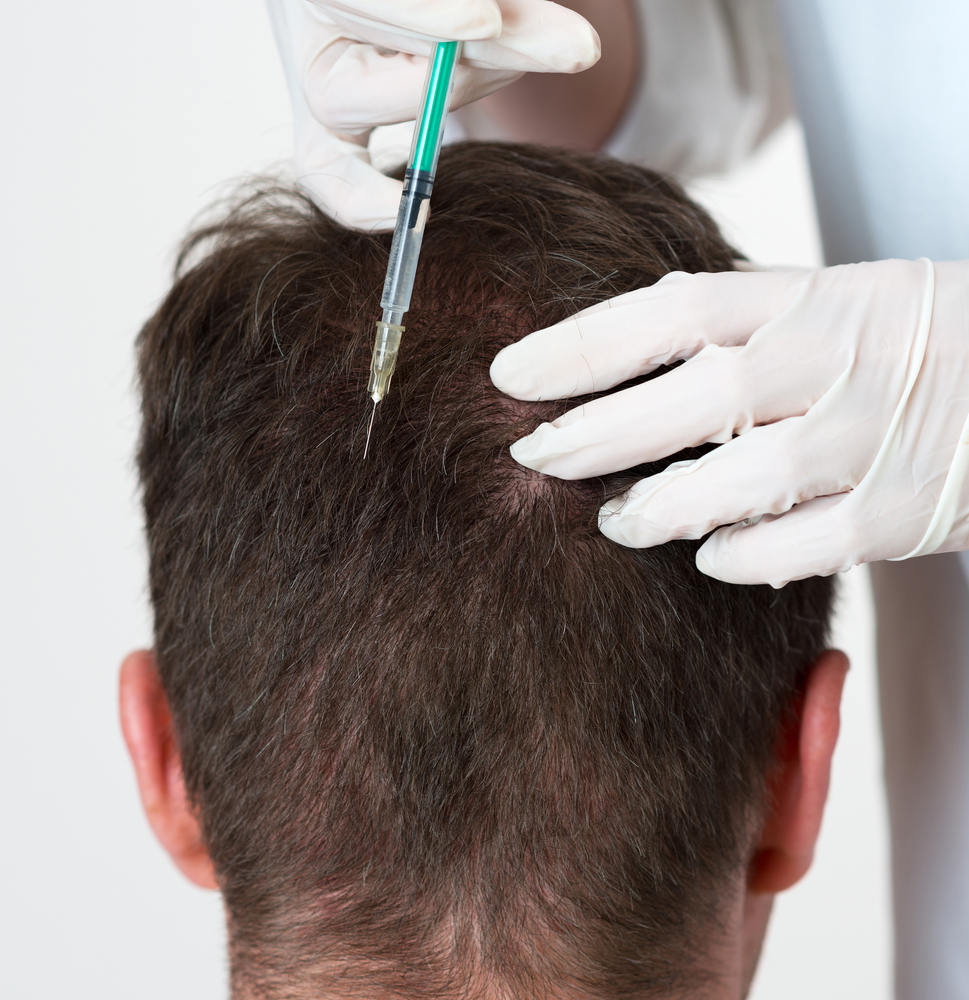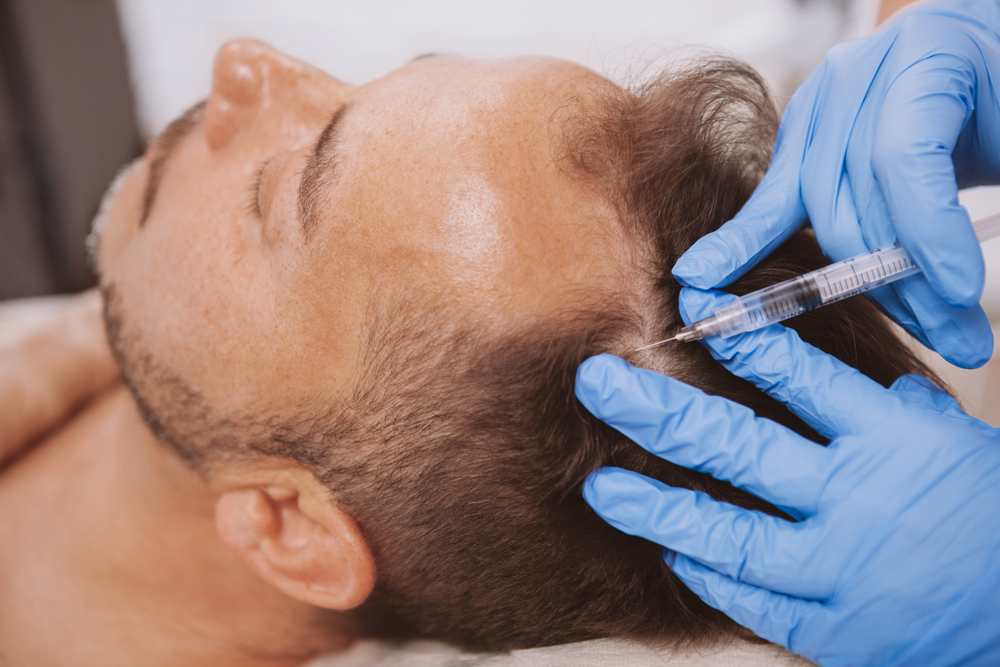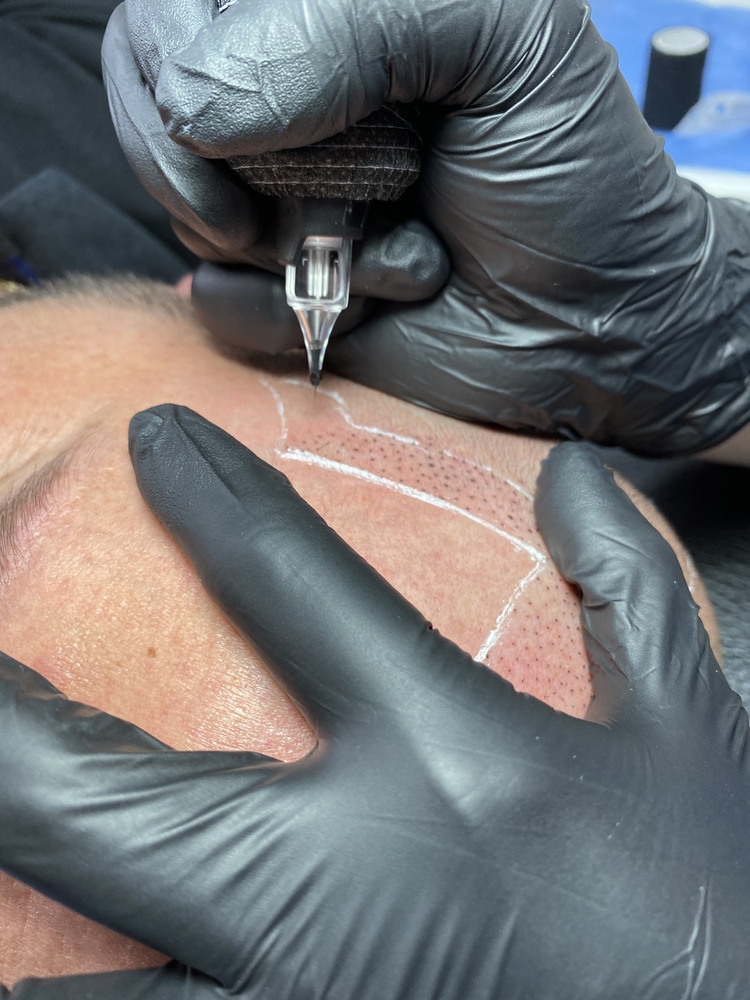Treatments
There are many effective solutions for hair loss available. Our Hair Science Institute providers may suggest a combination of two or more solutions based on each patient’s individual needs and goals for restoration.

Ingestible Supplements (Oral Nutraceuticals)
Nutritional and hormonal supplements are a keystone of hair health at the Hair Science Institute and are used to support every patient’s hair regeneration journey. For patients seeking to maintain hair health, these supplements can help to support a better scalp microbiome and to support patients experiencing hair loss as a result of exploring weight loss programs. At Hair Science Institute, our nutraceuticals, or hairceuticals as we like to call them, address the leading causes of hair thinning and loss including hormonal imbalance, stress, medications, chemicals, environment, and nutritional deficiencies. These drug-free supplements offer a natural way way to prevent future hair loss and improve the strength and vitality of the hair.
When hair transplantation is permanent, some patients may be left wondering why a hair-ceutical may be necessary. While FUE is, indeed, permanent, it is only effective in the area where the new hair is transplanted. If susceptible to continued hair loss, protecting the existing hair is vital to the success of the transplant procedure. As one physician puts it, no one would install an expensive lawn and not fertilize it. The same is true of hair transplantation. Hairceuticals target gut and scalp health to create an environment for hair to grow and thrive.
While it is tempting to seek immediate results, patience is key when it comes to hair regeneration. Patients who follow specific pre- procedural and post procedural protocols through the use of hair-ceuticals have the best results and often a faster recovery. The combination of a quality supplement with other methods of treatment can drastically improve the outcome by targeting the many ways hair may be thinning, from the inside out.
Topical Treatment Methods
A patient’s hair regeneration may include a combination of topical products including scalp cleansers, growth factor solutions, and topical medications.
Growth Factors
Growth Factors are signaling proteins produced by cells, which regulate the biological activities responsible for repairing cellular and genetic damage and maintaining healthy cells. These signaling proteins play a role in migrating stem cells to areas in need of cell proliferation. Production of growth factors in the skin slows down as we age and is exacerbated by environmental and photo damage. Topical application of growth factors has been shown to be an effective method for reducing visible symptoms of damage to skin, scalp, and hair. A clinical and at home multi-step approach helps to balance the scalp microbiome and enhances the environment for healthy hair growth, leading to thicker, fuller, hair.
Microneedling
Microneedling causes the body to go into wound healing mode and growth factors are released to repair the skin. In turn, these growth factors have an effect on hair follicles. Concentration of applications and frequency of applications may vary. In most instances microneedling will be paired with a topical application, such as exosomes or a growth factor serum to ensure best results.
Exosomes
Exosomes, which are extracellular vesicles involved in cell communication, homeostasis, differentiation, and organogenesis, have been shown to play a central role in hair morphogenesis and regeneration with potential for use as alopecia treatment. Exosome treatments are being used more frequently with promising long term results.
Scalp Cleansers
Though some may not consider shampoos and scalp treatments to treat hair loss as a stand-alone therapy, an effective quality hair care regimen can provide support for other treatments and give patients every chance of seeing better results. Using scalp treatments and shampoos as part of scalp health is key to hair health and helps to address and be part of each patient’s hair restoration protocol.


Energy Based Treatment Methods
Energy based non-invasive hair growth treatments for hair shedding, hair loss, and hair thinning involve the use of ultrasonic technology and low level laser and LED therapies.
Ultrasonic Delivery
Using an ultrasonic delivery method makes use of sound waves and air pressure to enhance the penetration of a powerful topical hair growth formula into the scalp. This combination is designed to increase blood flow, optimize scalp health, and stimulate hair follicles to produce thicker, stronger, healthier hair. Using ultrasonic technology as a delivery method combined with an effective topical formula can promote increased blood flow to the scalp and produce a healthier, thicker, stronger head of hair.
Low Laser Light Therapy
Just as light helps plants to grow, it also helps hair to regrow. Low-level light therapy (LLLT) is based on the biological effects of photobiomodulation in living organisms and has been shown to be effective in stimulating and energizing the cells within the hair follicle, a process identified as photobiomodulation. Red-to-near infrared can increase nitric oxide levels, a known natural inhibitor of DHT, the leading cause of male pattern baldness. LLLT is a safe and effective treatment for hair loss that reverses the natural process of miniaturization of viable follicles, stimulating and energizing the cells with the hair follicle and renewing the follicle for thicker, healthier hair. LLLT stimulates cellular activity in tissues and may be used alongside other treatment protocols, or as a stand alone treatment for thinning hair and loss. LED and low level, laser can be used to energize follicles as well. LLLT is associated with a range of wavelengths from red all the way through infrared laser light. There are multiple devices on the market that use various wavelengths. At Hair Science Institute, your provider may suggest a energy based treatment method that can be purchased directly through your provider and others that may be purchased over the counter.
Prescription Medication
Hair Science Institute physicians may recommend prescription medication for a patient suffering with hair loss and thinning that may include:
Minoxidil
Minoxidil is a medication used for the treatment of pattern hair loss. It is an antihypertensive and a vasodilator. It is available as a generic medication by prescription in oral tablet form and over the counter as a topical liquid or an oral medication. As an oral medication it will be prescribed by a physician.
Finasteride
Finasteride, sold under the brand names Proscar and Propecia among others, is another oral medication used to treat pattern hair loss. As an oral medication it will be prescribed by a physician. Finasteride is generally not recommended for women due to the risk of fetal abnormalities and birth defects.
Duasteride
Dutasteride, sold under the brand name Avodart among others, It is not as commonly prescribed but can be prescribed by a physician.
Spironolactone
Spironolactone is a synthetic aldosterone receptor antagonist that may stimulate hair growth. It is commonly prescribed for women experiencing hair loss, as other oral health medications are not approved for them.
These medications, while effective, often are accompanied by unpleasant side effects. Our specialists at Hair Science Institute first consider patient safety, potential side effects, pregnancy and cost-effectiveness when considering prescription medicated options for patients. These prescription protocol may include both topical and ingestible products as a stand alone treatment or alongside multiple modalities, including hairceuticals, LLLT, and surgical solutions for hair thinning and hair loss.


Injections
At Hair Science Institute, our hair loss specialists often combine hair regeneration therapies with injectable solutions including growth factors. One such solution is Platelet Rich Plasma (PRP).
Platelet Rich Plasma (PRP)
Platelet-rich plasma, also known as autologous conditioned plasma, is a concentrate of platelet-rich plasma protein derived from whole blood, centrifuged to remove red blood cells. Studies show that these injections can be a safe and effective hair loss treatment which help to regular healing. Several treatments are required and may be more effective for some than for others. Our specialists use both autologous and homologous injections and topical solutions for improved hair growth.
While PRP has long been the standard injection method for hair restoration, newer technologies such as topical therapies with exosomes and growth factors are now proving to be even more effective.
Scalp Micropigmentation
Lorem ipsum dolor sit amet, consectetur adipiscing elit. Ut elit tellus, luctus nec ullamcorper mattis, pulvinar dapibus leo.
Scalp Micropigmentation (SMP)
Scalp Micropigmentation uses micro-fine needles to apply ink (pigment) to to the scalp, eyebrows, or bear area to create thousands of tiny impressions, replicating the appearance of thicker, fuller hair. Suitable for all hair types, this procedure is often use to enhance existing FUE hair restoration procedures to provide an alternative to individuals looking to for non-surgical treatment. For women with thinning or thin hair, SMP provides fullness and density. For men suffering from male pattern baldness, SMP provides the appearance of a full head of hair and restores the receding hairline.
PDO Threads
PDO Threads are an in office procedure using Polydioxanone Threads for Hair Regrowth. PDO is a known, absorbable FDA-cleared synthetic suture and surgical scaffold material that stimulates endogenous collagen production, elastin, hyaluronic acid as well as activates fibroblasts. PDO (polydioxanone) threads have been used in aesthetic medicine for years for rejuvenation of skin, skin tightening, skin lifting, and wrinkle reduction. Hair regrowth in patients with hair loss from androgenetic alopecia has been observed in patients who had PDO threads inserted into their scalps.

